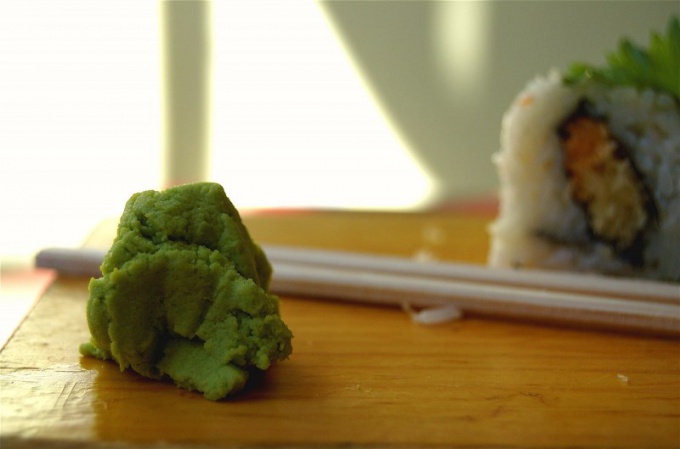The use of wasabi
Wasabi – a kind of hell, which is quite popular in Japanese cuisine. Its cultivation is from the X century. It grows along the shores or cold water of mountain rivers. The plant has a peculiar pungent smell. Wasabi is grown on the coast, has a more pronounced flavor than the "water" the plants.
Sharp condiment prepared from the green root by grinding. It is often used for sushi. Grass is a dense creeping stem with rounded leaves, which sometimes reaches 45 metres in length.
Useful vitamins and minerals in the composition of the wasabi:
• Vitamins A, B1, B2, B3, B5, B9,
• Folic acid, Niacin, pyridoxine, thiamine
• Protein, calcium, potassium, copper, zinc, manganese, magnesium
• Natural fats and carbohydrates.
Seasoning is very rich in isothiocyanate struggling with the manifestation of dental caries. If you use wasabi paste every day, you can prevent tooth decay. In addition, wasabi can be used in the fight against various types of cancer. When combined with raw fish paste gets strong antimicrobial properties.
The use of wasabi has a beneficial effect on the stomach and lungs. Wasabi also is an excellent aid for improving immunity and preventing aging of body cells. Because we all know that the Japanese are long-lived, mostly due to the traditional cuisine of this country. Japanese scientists are working intensively studying and using wasabi in the preparation of various medicines.
Use wasabi in cooking
The wasabi sauce goes well with salads and pickles. Cook the pasta can be bought fresh wasabi and rubbed it on a fine grater. If you purchase the powder that will be enough to mix it with water in equal parts.
Add one handful of pasta in a marinade for meat will contribute to its aroma and amazing taste. The meat should be covered with marinade and leave for a day. This time is sufficient for impregnation and flavor. Mayonnaise mixed with a small amount of wasabi, will find unusual spicy taste and fine sharpness.
Wasabi grows exclusively in Japan, due to special conditions of cultivation of plants, which significantly affects its value. Real wasabi can be bought only in Japan or in expensive restaurants. In schools of middle and cheap price ranges often passes for wasabi powder horseradish with dye.
